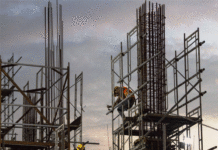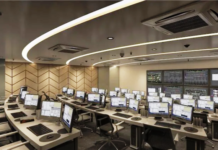By Ashish R. Puravankara, Managing Director, Puravankara Ltd With the passing of each decade, a new era begins, which lays a foundation for businesses and economies to transform themselves. Over the previous decade, the realty sector and its ancillary industries witnessed a series of structural reforms through changes in policies, market consolidation, and the strong emergence of PropTech. Most importantly, the sector has prioritized the ever-evolving needs of home buyers and has accordingly taken a step to regain their trust.
Today the industry is at a major cusp of transformation, owing to the many changes over the past decade which have given shape to some of the best practices in the sector. Though there are many milestones that have reshaped the real estate industry, there were a few visible ones that played a larger role in shaping the realty sector in the last 10 years
1 Increase in transparency
The real estate industry, for long, had been known for its complexity, as the processes involved were not very transparent between the realtors and the home buyers. However, with the introduction of RERA, GST and online registrations, this problem was addressed and became the foundation of the Indian realty sector. These policies have enabled customers to regain their trust in Indian Real Estate.
2 Affordable Housing was a positive move
With the concept of making houses accessible for everyone, the Affordable Housing scheme was launched and this gained huge momentum amongst realtors and home buyers. The number of houses built for the low-income sector, under the Pradhan Mantri AwasYojana in rural areas, increased by 33%.
#3 Eco-friendly construction knocked the doors
Both realtors and home buyers realized the importance of green technology, which involved technological advancements, the procurement of eco-friendly raw materials, and sustainable designs. The Indian real estate market recognized the growing need for sustainable projects that would contribute towards a healthy living. There is a clear trajectory that indicates that the realty sector moved towards a sustainable future.
4 Smart cities were introduced as a new concept
Due to the growing population and increased mobility, one of the biggest challenges residents faced was congestion; a clear solution to this was planning for smart cities. Indian realty slowly adapted this idea and designed projects that were self-sufficient and autonomous. Smart cities were designed to efficiently utilize resources while offering the best infrastructure to future generations.
5 ‘Pre-cast’ technology emerged as a ground-breaking change
In contrast to the in-situ concrete, that is on-site and time-consuming, Pre-cast concrete can be produced by casting concrete in a reusable mold, cured in manufacturing units. This allowed builders to customize designs and various components of the structure, with dimensional accuracy within a short timeframe. Pre-cast provided a plethora of options for the architects and engineers, as they could easily replace and rearrange these structures and components.
6 Smart homes made a prominent entry to the market
Innovation in the housing sector has already introduced us to smart homes, which emerged as a category with a potential for growth. Inbuilt Alexa connectivity, smart grid solutions and energy-efficient alternatives had begun to garner interest from the home buyers. The real estate market began to tap this space with many ambitious projects, which have led the Indian Smart Home market to be valued at $893 million as per industry estimates.
7 Online realty platforms became popular
Unlike the previous decade, buyers were no longer dependent on brokers to buy a property. Online realty platforms revolutionized buying patterns and positioned the buyer, just a click away from their dream homes. This not only retained the confidence of the end consumer but also gave them clarity on making an informed decision while buying property.
8 Emergence of the Co-Working and Co-Living world
According to a joint report shared by JLL and FICCI, the Co-Living segment could offer business opportunities of up to INR 1lakh crore by 2023. With the demand for shared rental space in the rise, Co-living and Co-working spaces successfully disrupted the traditional real estate practices.
9 Non-metros emerged as the new markets for businesses
The emergence of high-income jobs in the market brought a significant shift in the standard of living as compared to the last decade. By understanding the potential of these new markets, developers shifted their focus from the Tier 1 to the niche markets like Pune and Coimbatore. The non-metro cities further saw a trail of emerging businesses that led to the growth of both commercial and residential projects in the cities.
10 Millennials stepped forward to redefine the Consumer buying pattern
Millennials are now being seen as quintessential consumers. The changing lifestyle of these millennials has impacted the markets like compact housing, rented economy, co-living etc. Therefore, developers recognized this as an opportunity to expand their footholds to cater to the ever-changing expectations of the Millennials.
The sector has grown tremendously in the past 10 years and is set to revamp itself in the decade to come.
Corporate Comm India(CCI Newswire)




















